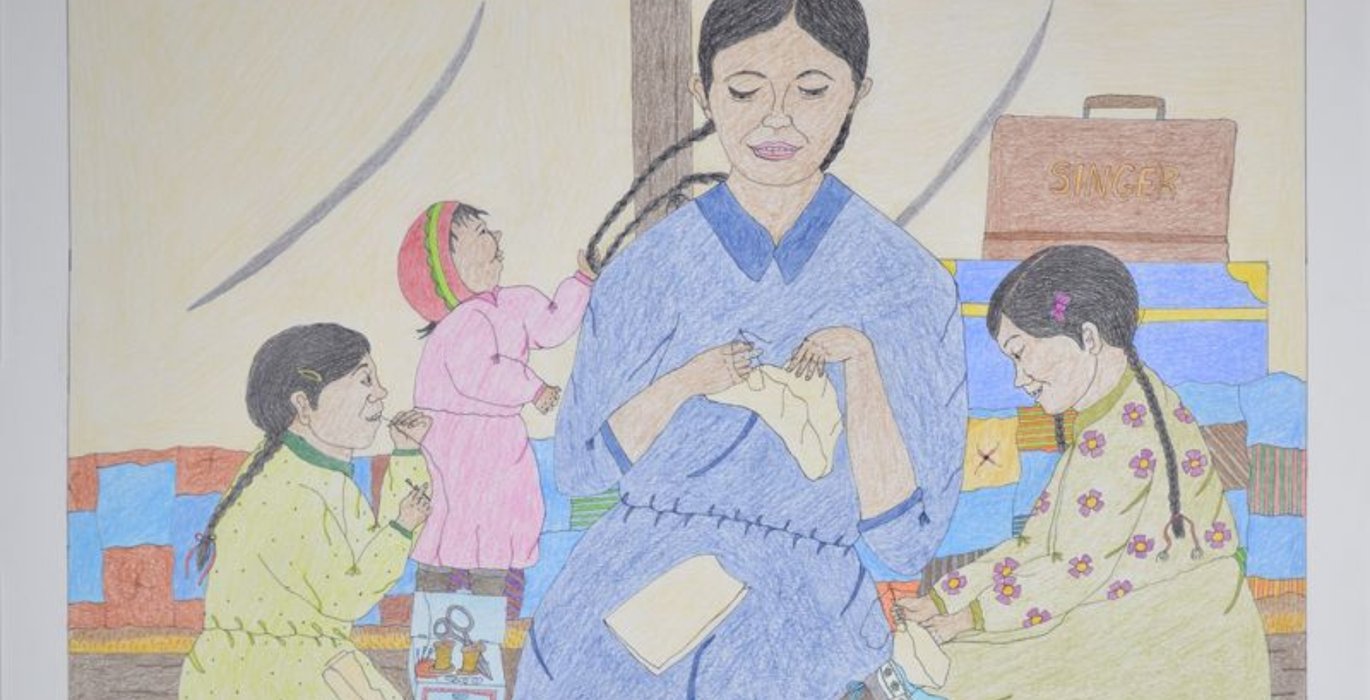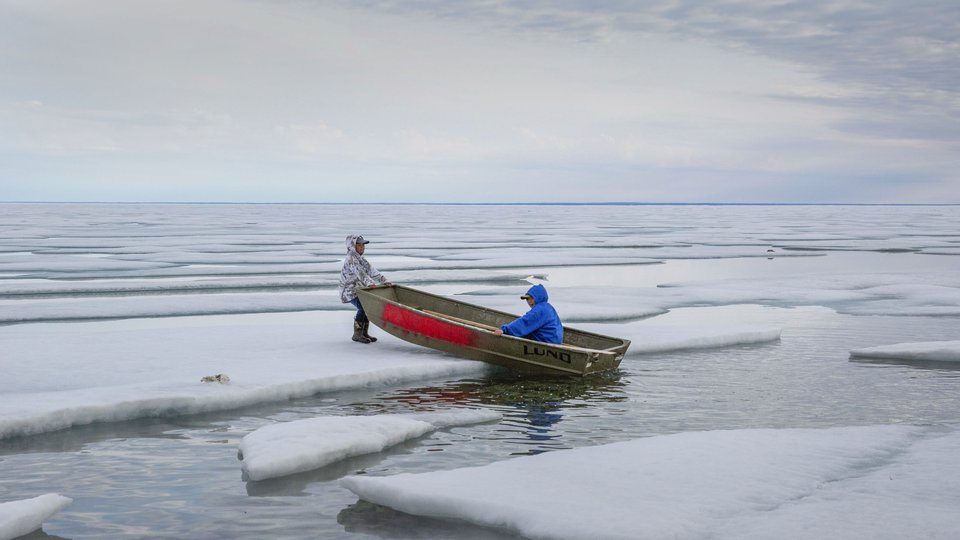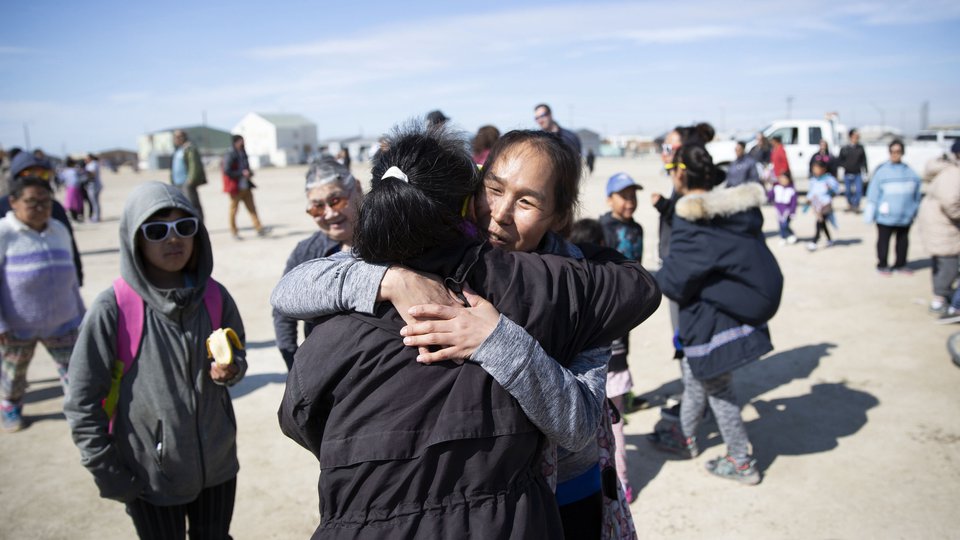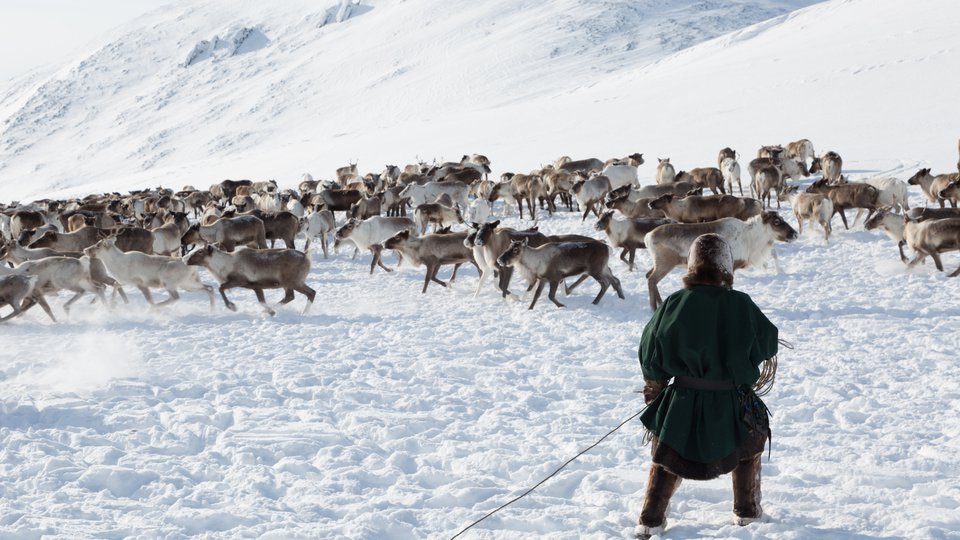
Omalluq: Pictures from My Life offers an intimate glimpse into late artist Omalluq Oshutsiak's life, culture, and memories.
Oshutsiaq was a celebrated carver from Kinngait, before an accident ended her carving career in the mid-1990s. She began drawing in 2013, creating deeply personal works that capture moments from her life, including depictions of her daughter, her injury, and Inuit storytelling traditions.
Omalluq: Pictures from My Life at WAG-Qaumajuq showcases 19 of her final drawings, including powerful narratives of community life, the legend of Aliguq, and a tribute to her late husband. This exhibition highlights the significance of Omalluq’s late-life artistic exploration and the remarkable depth of her storytelling through drawing.
Arctic Focus spoke to exhibit curator Darlene Coward Wight about Omalluq’s artistic journey, the significance of her drawings, and the process of bringing this collection to the public.
Arctic Focus: How did this collection come to WAG-Qaumajuq?
Darlene Coward Wight: Well, actually Omalluq was a discovery that I made. I really wasn't aware of her work. She had been a carver back in the 1970s…and she actually had become quite well known for carving, but she had an accident with her grinder and she severed a tendon in her arm, and that put an end to her art making.
She went sort of into a bit of a funk for a few years, but the co-op manager at the time…kept asking her, why don't you make some drawings? You can do that. And so in 2013, she brought in a couple of drawings to show the studio manager, and one was of her broken arm. She called it, ‘My Hand, My Broken Hand.’ The other was of her daughter Mary. Then she began drawing, and she drew for two years before she and her daughter perished of cancer in November 2014.
I was looking for art at the co-op in Toronto. They had sent down 19 drawings that she had made in those two years. And I just happened to be there, and they showed them to me and I said, these are amazing…and so the gallery purchased them in 2015.
And so I decided that now that we have this lovely space in the mezzanine area of this gallery, I put up a show of the 19 drawings…and they're really quite lovely.
Arctic Focus: What do the drawings in the exhibit depict?
Darlene Coward Wight: They're very autobiographical. She shows her life. She shows the things that she used to make carvings when she was doing that. She shows some of the traditional stories. She shows some images of a famous female shaman that lived in the South Baffin area.
So I thought these would be really interesting for people to see. They're so descriptive and so personal. And in fact, one of the drawings in particular shows her … husband's grave…and she's sort of a floating presence above him and weeping, and it is just amazing how she's able to put such personal things into her drawings.
Arctic Focus: Is there anything that sets her specific collection apart?
Darlene Coward Wight: Her work is incredibly detailed. It's beautifully coloured. It's fascinating. She has a still life that shows some of the material, the things that people would import into the Arctic, like powdered milk and the things that they used from time to time.
So it shows the way she lived. It shows her teaching her daughters to sew, and one shows the father teaching his son how to make a boat. It's so topical. It just shows the culture that she grew up in.
They're all autobiographical, and so it gives an immediacy, I think, to seeing this life that she lived.
Arctic Focus: Does her work as a carver influence her drawings?
Darlene Coward Wight: I think so. We have one sculpture here [at WAG-Qaumajuq], but a lot of her sculptures show women. Some of them show women giving birth, which was quite unusual and quite amazing. So I think that very personal viewpoint from her sculpture carries into her drawings.
Arctic Focus: What do you hope that people will take away from seeing the exhibit?
Darlene Coward Wight: Well, I hope that they appreciate her as a really famous artist. She didn't live long enough, unfortunately, to be able to become known for her drawings. But I'm hoping that this casts a light on that element of her work as well as the sculpture that she had done years before that.
Banner Image Credit: Omalluq Oshutsiaq ᐅᓱᑦᓯᐊᖅ, ᐅᒪᓪᓗᒃ. Mothers showing daughters how to sew, 2014. graphite, coloured pencil, felt-tip pen on paper. Collection of Winnipeg Art Gallery, Acquired with funds from the Estate of Mr. and Mrs. Bernard Naylor, funds administered by The Winnipeg Foundation Inc., 2015-133.





